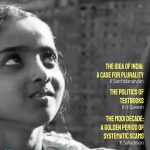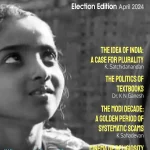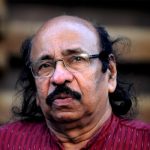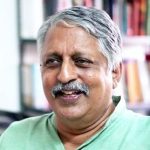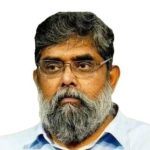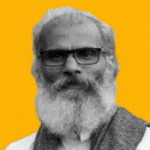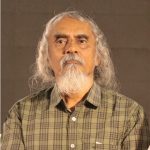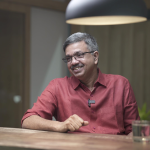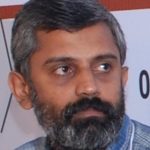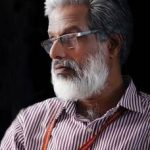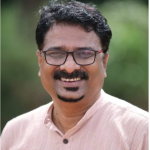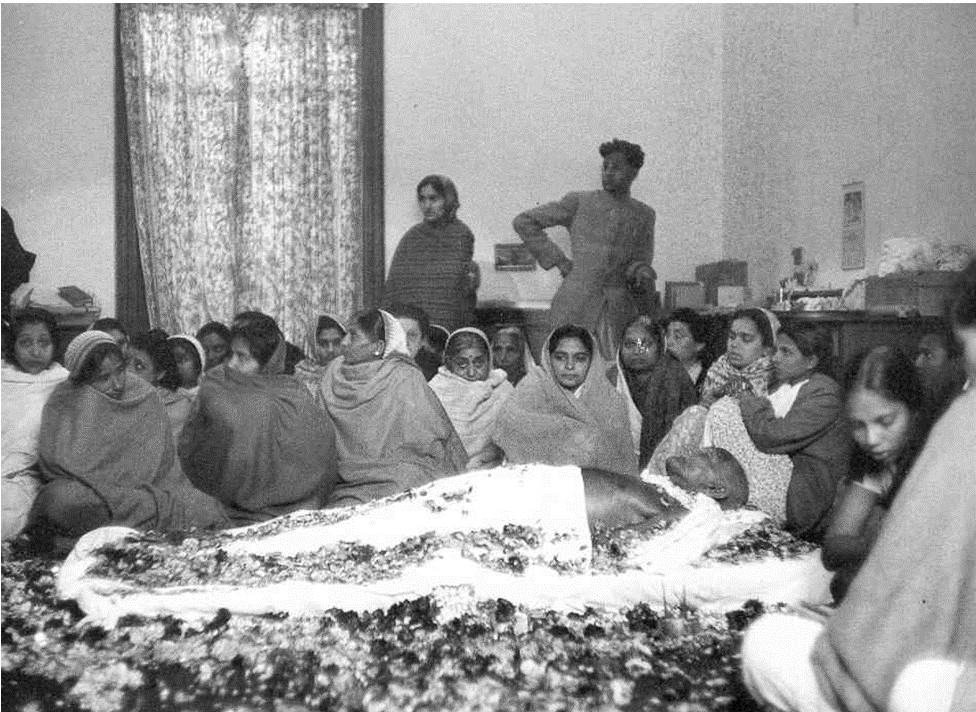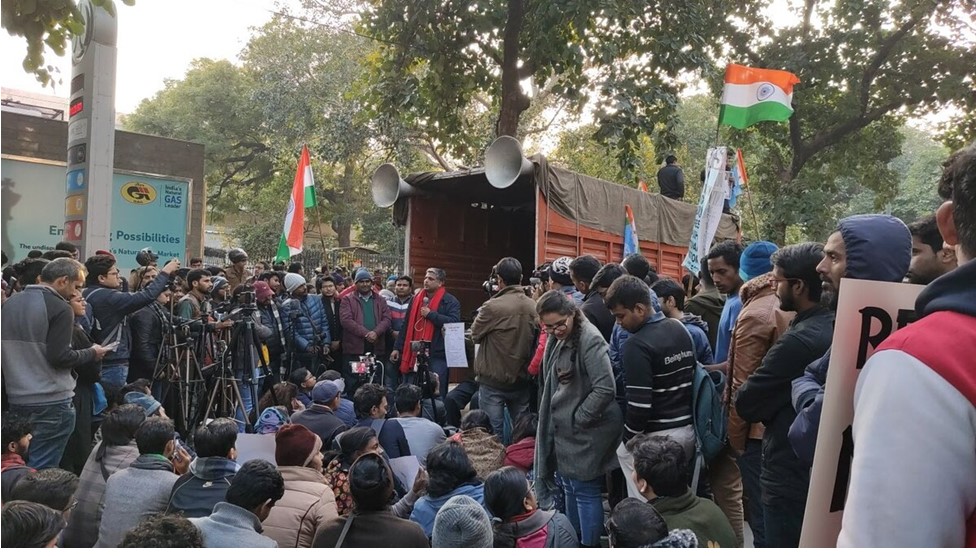

K.E.N
A Critique of the New Education Policy
Background of the Education Wars
Why have so many important things in the history of India, including Mahatma Gandhi’s life and vision, been left out of the new National Education Policy? As the noted historian E H Carr has explained, one cannot analyze a part without pondering upon the general situation. Therefore, we have to look at the many factors that worked behind the revised national education policy (NEP).
Some of the facts we have to take into account in the formation of NEP are as follows. Akhil Bharatiya Ithihasa Sankalan Yojana insists that legends are history. Vidya Bharati thinks that Indian culture is one of caste supremacy. Shikshabachao Andolan Samiti considers miscegenation to be a crime. Sangh Parivar propagates political stances that trivialize and justify secular destruction, including the assassination of Gandhi. We hear arrogant shouts to burn Nehruvian books and statements to name the famous JNU after RSS founder Hedgewar. Historical distortions go on in the textbooks of several northern states. School lessons, since the Murali Manohar Joshi era, glorify Nazism and fascism, hailing Adolf Hitler as a hero. The education reforms started after Vajpayee became Prime Minister in 2000 and intensified in recent years. Attacks on universities in the name of fake nationalism since the beginning of the Modi era became a new normal. The Martyrdom of Rohit Vemula and the unexplained disappearance of Najeeb Ahmed are still haunting us. Several teachers and students were imprisoned after being labelled traitors of the nation in their struggle for justice. Kargil War Martyr Sandeep Singh’s daughter, Gurmahar Kaur, studying at Lady Sriram College, Delhi, suffered for saying that it was war, not Pakistan, that killed her father, and we need peace against war. Children study the CBSE syllabus in which the ideas of secularism and federalism have been removed. There are recent rulings on what kind of books are not to be read. These instances are exactly what the famous cultural critic Martha C. Nussbaum describes as the educational wars. In the backdrop are many such subversive approaches, including anti-secular attitudes, that started in India in the nineties and have now become extreme.
Caste supremacy in India has been more active as an invisible regime, after independence than before it. It pushed many myths into cultural life, both formally and informally, starting initially in social domains where it had fewer defenses. It is a process that undermines critical thinking, which is at the heart of education. The total integration between the invisible government that reinforced caste dominion and the ruling powers that had at least occasionally interfered with it was completed with the rise to power of Narendra Modi in 2014. India has entered a new phase of the neo-fascist rein. Without looking at these determinants, the depth of danger in the new educational reforms cannot be gauged.
High levels of unemployment naturally create a welcoming environment that stresses on job-oriented skills. Some drop out of the educational process—those who, in the proper sense, are left out by the system—may rejoice in the prospect of a certificate of some sort. They are simply deceiving themselves. Making the three-year degree into four, controlling educational practices including research under a central agency, and scraping out the M-Phil degree alone, will not improve the quality of education in any sense.
Nothing can be found in this policy document that can color our dreams, deepen human relationships, and give wings to fraternity. A new vision of education should develop and strengthen secular democratic humanitarianism. Such a policy can encourage critical thinking and cultivate creativity. Empowering the new generation to face the complexities of modern times, imparting scientific knowledge beyond technical expertise, embracing a developing global consciousness, welcoming a loving cosmopolitanism, enabling decentralization- which can be called the heart of democracy- and identifying ingenious regional culture- No such project is put forward in NEP, though it claims to be new.
Contents of the new education policy document
The NEP which assimilates many abstractions indiscriminately and uncritically, is neither new nor national. Then, what is its essence? Most of its ingredients are an amalgam of the imagined golden past that history has already dismissed as fictitious, ethno-caste perspectives, and a market-oriented cultural approach. It shows an attitude that reduces education to a commercial commodity and maintains silence on the liberating value of education. The absence of secular federal principles that were at least named in the educational policies of the past is quite alarming. NEP denies a researcher the freedom to pursue topics of his/her choice. The content of this document points to a sinister paradigm shift in the realm of education.
Until the 1990s, though maimed and limited, the concept of freedom existed in the Indian social milieu. The ideology of ‘liberty, equality, and fraternity’ of the French Revolution of 1789, evolved gradually into the neoliberal ideology of globalization, liberalization, and privatization after 1990. NEP tries to enforce an uncritical acceptance of the market as central to life, while at the same time making a futile attempt to connect it with India’s ancient past. Thus, the neoliberal and the revivalist perspectives complement and reinforce each other. The Indian condition in general, and the education policy in particular, must be probed as a cultural incarnation of the state apparatus in the form of the temple-corporate complex, as observed by the eminent sociologist Meera Nanda. The educational policy is built on the five pillars of Aryavartha, Manusmriti, Advaita, Sanskrit, and Corporatism. Capitalist national systems previously focused on defense, internal affairs, and finance departments. Due to social pressure, the latter’s emphasis has expanded, albeit nominally, to health, environment, and education. But the 2020 education policy is, at least indirectly, a return to the old status quo.
Listen to Prime Minister Narendra Modi’s statement that this policy has been formulated by including all points from the roots to Vishwa, Manu to Humanity, and Transcendence to Modernity. It fundamentally underlines, as noted before, the alliance of revivalist resurrections and the market. Roots, Manu, and transcendence are indicators of the ‘glorious’ past for which the policy gets abnormally excited. Concepts such as cosmology, humanism, and modernity are reduced to globalization. The document puts forward proposals that strengthen the privatization and centralized nature of education, which further weaken marginalized communities. The preamble to the document mentions the Declaration of Human Rights. The ideas of Vivekananda, Einstein, and Jacques Delors about education are discussed. There is also an indication of the right approach for the complete development of the individuality of a person. But the presentation of these ideas is executed in such a way that ultimately the policy subverts it all. Training for collaboration is one of the most important of the four pillars of education upheld by Jacques Delors. Conceptions in the NEP have been arranged in such a way as to seriously impair the collaborative spirit by including only some parts of our history and rejecting others altogether. Those who celebrate the preface, make one reminiscent of the poet’s verse about the fool who watches the flowers in the vase and believes that the whole garden has blossomed.
The praise for ancient glory in the new education policy and the Prime Minister’s use of ‘roots’ fortify the vision of ‘cultural nationalism’ reiterated by the Sangh Parivar. Golwalkar wrote in 1939: “The best lesson that India can learn from the experience of Germany is that it is impossible to live in a mixture of fundamentally alien cultures”. Foreign races should decide to embrace Hindu culture and heritage, respect Hinduism, and stop appreciating other ideas of non-Hindu race and culture. And they should give up their belief and merge into the Hindu race. Or they should submit to Hindu society leaving behind any other demands. They do not even have the right to citizenship.
Educational policies of regressive politics
It is not possible to scrutinize NEP, which is a cacophony of disrupting proposals, in isolation from the contemporary politics of India. Who introduced the policy? What characterizes the context in which it is presented? What is missing from the said document? Who welcomed this policy in the first place with loud applause? These are the minimum things that should be asked. RSS chief Mohan Bhagwat declared 2019 the year of the triumph of Sangh Parivar’s ideas. Even when the Education Act faced criticism from many quarters, it was welcomed by the RSS. Post-2014 circumstances of India in general, the 2018 formation of an official commission for writing alternate history, the repeal of Section 370 in 2019, Citizenship Amendment Act- all these are the ominous elements lurching behind the formation of the NEP. The NEP document should be understood as a manifesto of cultural nationalism put forward by the Sangh Parivar, as has been stated many times.
‘We must stay true to our dream of re-introducing Bharath Matha as the cultural guru of the world.” The document intrinsically expresses this idea of Guruji Golwalkar. From the Sangh Parivar point of view, the formation of linguistic states is linguistic madness. According to their understanding reservation is a barrier to assimilation. Bharath means the holy land where gods always sing auspicious blessings. This is what the educational document does point up. The document puts forward the approach of ‘hegemonic nationalism’, which rejects nationalism itself, by rejecting Gandhiji’s nationalism based on social equality, Nehru’s secular nationalism, and democratic nationalism developed by the Left.
Gandhi, the enemy
It is not to be forgotten that the Sangh Parivar’s efforts to defame Mahatma Gandhi on many levels were even included in North Indian textbooks. The reasons for this attack on Gandhi are clear from Gandhiji’s attitude, which is vehemently hated by the Sangh Parivar. Let us recall some words of Gandhiji: ‘My sense of nationalism is that I want my country to be free, and if necessary, the whole country should die for the sake of the human race… I am a good Muslim because I am a good Hindu… My religion does not issue orders to the country. And my country will not give orders for religion… I will not touch even a single mosque, even if a thousand temples are burned to ashes… I am not prepared to establish the supremacy of my faith over such fanaticism… There is no Swaraj without Hindu-Muslim unity… It is a mystery to me how men can feel pride in scorning their brothers… The cow must be saved, but must we save the cows by killing our brothers? Hinduism prohibits cow slaughter only among Hindus… I have heard that the root of all these troubles lies in the Sangh, and Hinduism cannot be saved by such murderous gangs… Education is essentially character-building… Education without social consciousness is the bane of India.’ The Sangh Parivar can never forgive Gandhiji, who repeatedly insisted on these ideals.
Gandhi’s assassination, which should be described as the first act of terrorism in post-independence India, has been presented in the 8th standard textbook in Gujarat by draining out all the political implications of that terrorist incident. The text brings to mind the cruel Obama phrase about the Hiroshima massacre, that ‘death fell from the sky’. The textbook says: ‘After independence, there were many terrible communal riots in India. Gandhi used all his power to suppress them. However, many could not agree with Gandhiji’s position.’ The textbook continues that Gandhi was finally killed on January 30, 1948, by the hands of Godse. In brief, they have turned the missile of hatred against Mahatma Gandhi under the banner of hegemonic nationalism. Gandhi wrote in 1936, ‘My assassination is not so important. Because thousands of Gandhis will rise from my ashes. But what happens if the values I stand for are killed, if they go up in flames?’ What Mahatma Gandhi feared eight decades ago is happening in India in many ways, including atavistic educational approaches. Rather than critically engaging and self-empowering, the education policy urges one to purify oneself by purging the impurities.
Truncated truths
The new educational document has a pompous narrative of a certain antique era. But there is not even a fingerprint of the diverse thought processes that made India a unique nation. There is no mention of the federalism that saw diversity as the kernel that made Indian nationalism possible. No trace of anti-imperialism that shaped modern India. There are no steps against market fundamentalism that destroy every aspect of humanism. There is no message of religious harmony that Mahatma Gandhi breathed his life into. While adopting a welcoming approach to foreign universities, there are no proposals to revitalize public schools. While Sanskrit is given more importance than a language, Urdu, Arabic, and Chinese are not even considered primary languages. Why did the curriculum, which covers everything from Thai to Korean, completely abandon Chinese, Arabic, and Urdu? What is the reason for giving more importance to Sanskrit than any other language? Why are the references to the intellectual debates in ancient and medieval India omitted? How did the so-called sixty-four arts and yoga find their way into the education policy? If we explore these aspects in depth, the pitfalls of the cultural nationalism of the Sangh Parivar will be uncovered.
These days nowhere can we hear any significant debate about ‘yoga’ openly entering the educational system as an agenda. Even the earlier criticisms against the attempt to make the religious culture a national culture under the facade of yoga are no longer remembered. It is up to individuals and communities to adopt or not adopt a ritual practice, idea, or outlook at their convenience and freedom. But the nationalization of any ritual is not that harmless. While Sanskrit as a language, Advaita as a philosophy, and ‘Yoga’ as a practice are relevant, they cannot be reduced or developed into nationalism. With the entry into nationhood, everything, including language, becomes part of the official system of authority.
The language of supremacy
The NEP explicitly presents the Sangh Parivar attitude of ‘Sanskrit’ not as one of several classical languages. Rather, it becomes the cogwheel of a superior system of authority. If the foundation of education is the great Indian antiquity, then Sanskrit comes in as the ‘mother tongue’ of that past.
Max Muller’s role in popularizing Sanskrit is a well-known fact. He was even willing to Sanskritize his name as ‘Mokshamoolan’ out of love for that language. Sanskrit is hailed as the mother of all languages and the repository of universal knowledge. Vivekananda boasted that there is no word for ‘other’ in Sanskrit, the sacred tongue of his nation.
Golwalkar insisted that only the Sanskrit language could be the medium to maintain our national identity. He unequivocally opined that on the issue of ‘common language’, until Sanskrit takes that place, we will have to give preference to Hindi as a matter of convenience. For him, Sanskrit is not a mere language like other languages, which are tools of learning, professions, and religious practice. It is a Sanskrit that is considered to be the source of all cultures. According to this hegemonic view, Sanskrit is equivalent to the whole culture. That is why Sangh ‘intellectual’ leaders like O. Rajagopal are asking if the rioters will understand that knowing Sanskrit is a must to understand India’s heritage. But why don’t they say that it is a must to know the ‘Pali bhasha’ that Mahatma Buddha spoke to billions of people to understand our heritage? Classical is a standard created by those in cultural power, as famous musician TM Krishna points out. Aijaz also observes that Sanskrit was a part of classicism, Brahminism, high culture, and feudalism in India. The definition of mother tongue in Shabdatharavali is the language spoken by the mother to her child. But no mother had the right to pronounce Sanskrit (Dr. K. Sugathan). Heavy punishment awaited the Shudra and the woman who uttered Sanskrit. Tulsidas was attacked for writing Ramacharitamanasam in the Awadhi language instead of Sanskrit. Earlier, those who wrote poetry in Malayalam were not respected as ‘complete poets’. Scholars were reluctant to teach Kabir Sanskrit because he was a weaver. Guru Nanak was derided as a man who knew only the village language of Punjabi and did not know Sanskrit. All this is our history. Along with land and state power, hegemonic Sanskrit has played an important role in giving authority and power to caste supremacy. This kind of Sanskrit has nothing to do with enlightenment or knowledge-seeking paths in Sanskrit except in the name of the language. This supremacy was maintained by Sanskrit as a feudal value for the feigning of aristocratic status. Upper-caste Hindus always talk about the need to preserve old values. But the lower castes demand to accommodate the changes according to the times. Both speak of two historical periods and refuse to reconcile (DR Nagaraj).
The ‘Sanskrit’ of the Sangh Parivar reveals a point of view that refuses to recognize the concerns of the minority classes and the idea of secularism. Presented at the 102nd Indian Science Conference in Mumbai, the ‘scholarly’ paper on ‘Ancient Science through Sanskrit’ and its sequel revealed several absurdities that are in no way compatible with the modern worldview. The participants claimed that the airplane, atomic bomb, and surgery were here long ago. The ‘scholars’ claimed that all human knowledge first originated in Sanskrit and then spread throughout the world! Through the hollow praises for Sanskrit, they present the monogenesis view of knowledge, which is discarded by the history of thought.
We can decipher that there are at least three types of Sanskrit. Above all, Sanskrit is to be upheld as a model for the pursuit of wisdom. This conceptualization of Sanskrit, as a ‘library language’, can interact with the perspective of modernity. The second one is another Sanskrit, which is a part of the Vedic rituals but rejected by the advent of social renaissance. Such was the traditional Sanskrit imposed on the Namboothiri boys. E M S and V T Bhattathirippad have subjected this type of Sanskrit to sharp criticism. V T writes: ‘Malayalam is Mlecha; Sanskrit, the language of God, is the best for Brahmins. So, I started using the Sanskrit words Matha and Pitha instead, as the words Amma and Achan were derogatory, even though I had learned them through my mother’s milk. Due to an innate habit, if a Malayalam word slipped out of my tongue by mistake, others used to forbid and criticize me by making a ‘shoo’ sound.” VT also remembers being beaten up by his mother for calling her Amma instead of Matha. But the most dangerous is the third category, the Sangha Parivar Sanskrit, which maintains the view of ‘everything through Sanskrit’. It is the language of predominance marked as a flag sign of the noble class. Sree Narayana guru, who was also a Sanskrit scholar, broke that accent of superiority, reminiscent of Macaulay’s English, in Thalasseri in 1908. When Manantala Neelakandan Mussath spoke in Sanskrit, the Guru’s gentle response that everyone could understand if it was in Malayalam was a slap on the head of Sanskrit supremacy.
The new educational policy does not follow the discursive epistemological models of Sanskrit, but rather the dominant ones. That is why the policy is to be criticized from a progressive point of view. A Eurocentric view of wisdom is not to be replaced by an Arshabharatha-centric view; it should be dealt with from a democratic way of thinking. Diversity should be recognized as a strength, not a stigma. Sangh Parivar forces are trying to officially spread the concept of the ‘purity of the race’, upheld by the Chaturvarnya system, about history and language using education as their ideological tool.
Lessons that hide the facts
How do the narrow approaches of P. N. Oak and Deenanath Batra work in this mode of education? Caste supremacy cannot accept anything based on equality and rejects it outright. Even if something gets accepted, it will be denied entry until it has been appropriately transformed under the cast domination narrative.
Deenanath Batra is a person who appeared on political platforms as an educationist of the Sangh Parivar. He scrutinized and demanded that twenty-four words mixed with ‘Urdu’ like ‘Dost, Mushkil, Mohalla’ be struck from the Hindi textbooks of North India. Urdu is completely left out of the new curriculum. This is how the Sangh Parivar government has treated a language that still plays a vital role in Indian literature and life. Browning says that when two words meet, not another word, but a new star is born. In India, for decades, the Hindi-Urdu languages, with thousands of words when they meet each other, have not raised stars in the sky. Instead, many people who have been crippled by fighting each other fall to earth. Nathuram Godse called ‘Hindustani’ mixed with Urdu, which was very dear to Gandhi, a ‘bastard language’. A monument to Wali Gujarati, the father of Urdu poetry, was vandalized during the 2002 Gujarat genocide. There is now a tarred road near Ahmedabad Police Station where Wali’s ‘Dargah’ stood. Not even a vestige of the dargah can be seen there. The Urdu language emerged as a creation of Hindu-Muslim unity and friendship and as a product of medieval historical and social conditions. Urdu, Ghalib, and Taj Mahal are known to be the three greatest contributions of the Mughal period.
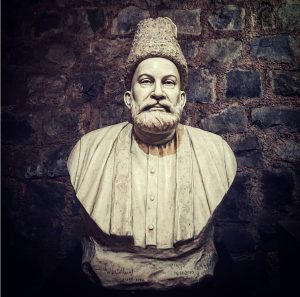
Today, Urdu has been wiped out of the cities where Ghalib’s voice echoed. From the day independence was declared, it was branded as a vile language and seditious (Sahir: Spellcaster of Letters, K. P. A. Samad). Even though it was ‘vile language’, it survived somehow. But today, Urdu has been completely excluded from the national education system, the cultural nucleus of the nation, leaving no residue behind.
The Sangh Parivar generally holds a narrow religious view that Arabic equals Islam. They mark Arabic as not one of the world’s leading living languages. Rather, it is a language that works against everything that Hindus do. Their analysis of Arabic is weird, as is the argument that if we Hindus write from right to left, Muslims write from left to right against us. Not only Arabic but many languages, including Urdu and Hebrew, are written in this way from left to right. It is not to show favor or opposition to anyone. Although this is clear, the emotional campaign that is being carried out against Arabic is very tapered. It has been observed that there is no world language without Arabic words. Yet Arabic has been left out of the curriculum.
‘Vicharadhara’ puts forward the view that the Chinese are uncivilized because they eat anything. That may be the reason why the Chinese language has also been abandoned. The omission of two or three languages and the exclusion of certain views are not the only defects in this education policy. Views in Vicharadhara, slogans of Vidya Bharati, and demands by PN Oak and Deenanath Batra are included in it. Instead of harmonious unity, attempts to impose forced integration are underlined. The repressive integrationist logic was violently pursued in institutions like JNU under the guise of nationalism. ‘JNU is not an enemy country’, Mathrubhumi wrote in an editorial.
Fading resistances
A university stands for humanity, tolerance, the adventures of ideas, the pursuit of truth, and the advancement of humanity towards higher goals. (Nehru)
History can never remain stagnant. It is an interlinking of different eras and different types of events. History, not only as a unique social science but also as the physical foundation of cognition, is being subverted in India these days. The sense of a constant dialogue between past and present undergoes a mere mythologizing activity, thereby ‘Brahmanicizing’ Indianness. It reduces the diversity of nations to an artificial homogeneity and erases the intense saga of struggles. Sangh Parivar interprets education policies the way they want without any logic. The neo-fascists have largely succeeded in diverting common sense to the point where all this is possible. Nathuram Godse’s obscene 1977 book, justifying Gandhi’s assassination was titled May It Please Your Honour. In 1993, the title of the same book was changed to Why I Assassinated Mahatma Gandhi! The fake humility of the book’s title in the seventies, grew into arrogance by the nineties. This is not just a change in the name of the book. Propaganda through ‘informal’ education carried out by the Sangh Parivar, partiality of even the official media, converting caste differences into religious antagonisms, growth of the Sangh Parivar as the largest and richest party in the world—all these changes happened along with it. Today, there is no such protest against the education policy introduced by Murali Manohar Joshi during the Vajpayee era. On September 2, 2001, Bengal Chief Minister Buddhadev Bhattacharya convened a meeting of education ministers against the education bill. It cannot be forgotten that there were protests all over India, and the Sangh Parivar forces were shaken. But such resistance does not exist any longer.
Einstein’s nightmare
Making even those who eat fish and meat think there is something ‘wrong’ with it, or at least pretend to do so, misleading even non-practitioners of yoga that there is something miraculous about it, and constructing the myth that cast nobility is the standard of culture – in such propaganda, Sangh Parivar is far ahead like never before. Even the promiscuous use of apparently innocuous expressions such as Saraswatikshetra and Gurupranam is not so innocent. It transforms the teacher into a guru and the student into a disciple. School is equated with Saraswati Temple, vows with prayers, and public institutions with charity centers. These efforts are to erase the history of the democratic struggle over many years. Many people indulge in such vocabulary without realizing it. They will also soon accept the ‘thesis’ of P. Parameswaran, Sangh Parivar spokesperson, that Saraswathi Puja is the reason for complete literacy in Kerala.
It was the ‘bad learning’ that led Gujarat to the unparalleled genocide of 2002. Democracy cannot survive in its advanced form without ending the othering in the name of ancient Indian glory. If none of these are necessarily realized, the Indian people, especially the marginalized communities, will have to go through a severe crisis. This is happening slowly in India and quickly in areas of lesser resistance. Even India’s proud universities, where the sparks of critical thinking have arisen, are being turned into nurseries of prejudice. Renowned educationist Professor Apoorvanand’s writing based on the experience of one of his students, is immensely relevant. It will surely make us realize how universities act as bulwarks even when a country is slowly sinking into an ocean of prejudice. The background is a romance between a Brahmin female student and a Dalit male student. The boy was threatened that he might lose his life. The student sought Professor Apoorvanand’s help, expressing his desire to join JNU as it was difficult to study at his present place. In Apoorvanand’s words, the university is not just a place to study for those who end up as social and cultural refugees, but also a shelter and a comforting home. Subjugation also means the disappearance of the right to choose the opportunities that each person should have. This is happening in many places in India. At the heart of the new education policy is an attempt to build long-term ideological validation for totalitarianism.
A nightmare seen by Einstein during the time of classical fascism was to strangle his history professor!
K.E.N. Kunjahammad is a writer, lecturer, and cultural critic. He was the head of the Malayalam department at Farooq College, Calicut. He received the Gurudarshan Award named after Sree Narayana Guru, Abu Dhabi Shakti Award, and the Thayat Award.

